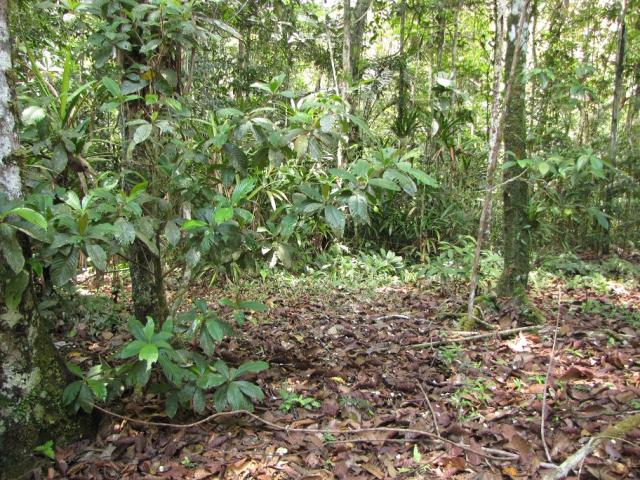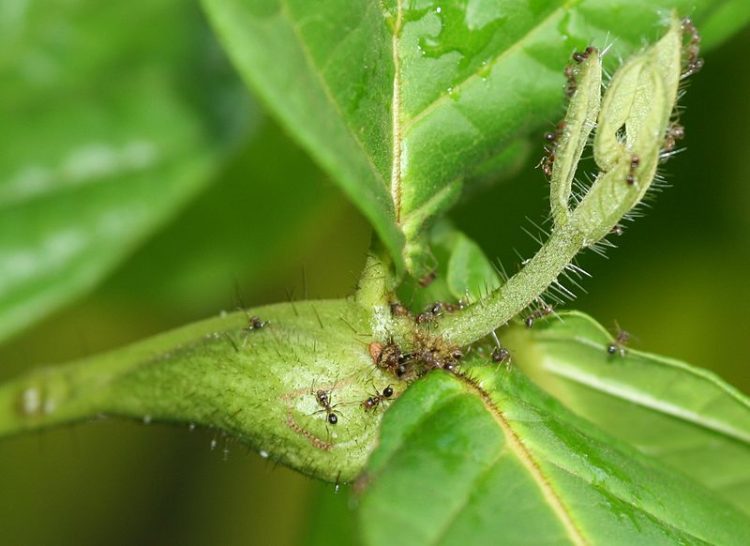Tropical rainforests are densely populated with a remarkable diversity of plant life, from various trees to vines, shrubs and flowers, but deep in the Amazon rainforest there are large areas that consist of a single tree species. These are known as Devil’s Gardens.
The indigenous tribes of the Amazon rainforest have known about Devil’s Gardens for hundreds, if not thousands of years, and they have eerie local legends that speak of evil spirits. In fact, it’s these stories that inspired the name of the mysterious tracts of vegetation randomly spread throughout the jungle. Many locals believe that they were planted by an evil spirit, and who can blame them? After all, how can one explain large areas of otherwise diverse rainforest where only a single tree species appears to thrive? Well, a few years back, researchers found that Devil’s Gardens are not the work of the devil, but that of a small ant that only aims to ensure the survival of its habitat.

Photo: Bart Bouricious/greencomet.com
The Devil’s Gardens of the Amazon rainforest consist almost entirely of a single species of vegetation, Duroia hirsuta, a tree whose roots contain a strong plant growth inhibitor. For years, scientists believed that it was this inhibitor, plumericin, that kept other plant life at bay, but in the early 2000s, a team of scientists discovered that it was the inhabitants of the tree that killed any plant that came near their home.
In 2005, Stanford University graduate student Megan E. Frederickson and her team published the findings of a four-year study of Devil’s Gardens. They reported that it was not so much Duroia hirsuta that killed any plants encroaching on its territory, but Myrmelachista schumanni, also known as the ‘lemon ant’.

Photo: Vojtek Zavadil/Wikimedia Commons
After analyzing Devil’s Gardens in the Amazon rainforest and conducting their own experiments, Gordon and her team found that lemon ants basically create these bizarre one-plant-species areas by injecting a natural herbicide, formic acid, into any other plant that is not duroia hirsuta.
“By killing other plants, M. schumanni provides its colonies with abundant nest sites—a long-lasting benefit, as colonies can live for 800 years,” Megan E. Frederickson said. “The idea is that by killing other plants, the insects create a space for young D. hirsuta saplings to grow, thereby allowing the ant colony to expand as it occupies new nesting sites in the saplings.”
When introducing other plant species both in natural Devil’s Gardens and in laboratory conditions, scientists reported an almost immediate response from the lemon ants. They promptly attacked the intruders, injecting formic acid into their leaves, which started dying off within 24 hours. Most of the leaves on the saplings died within 5 days.
Apparently, Devil’s Gardens begin with a lemon ant queen colonizing a single Duroia hirsuta tree. In time, new saplings of the same species begin to grow in the space cleared by the ants, and their colony grows. Research showed that these botanical anomalies grow at a rate of 0.7 percent per year, which judging by the size of some of them, suggests that they can be over 800-years-old.
Seeing how efficient these tiny ants are at killing the competitors of their host, one wonders why the rainforest isn’t just a single species of tree? Well, it turns out that, as the colony grows and the Devil’s Garden grows past a certain size, the ants aren’t able to protect it against encroaching vegetation anymore.
Devil’s Garden is a fascinating phenomenon for many biologists, as it reveals the control ants can have over their environment, creating single-species structures in what is one of the most diverse ecosystems on Earth, the Amazon Rainforest.












